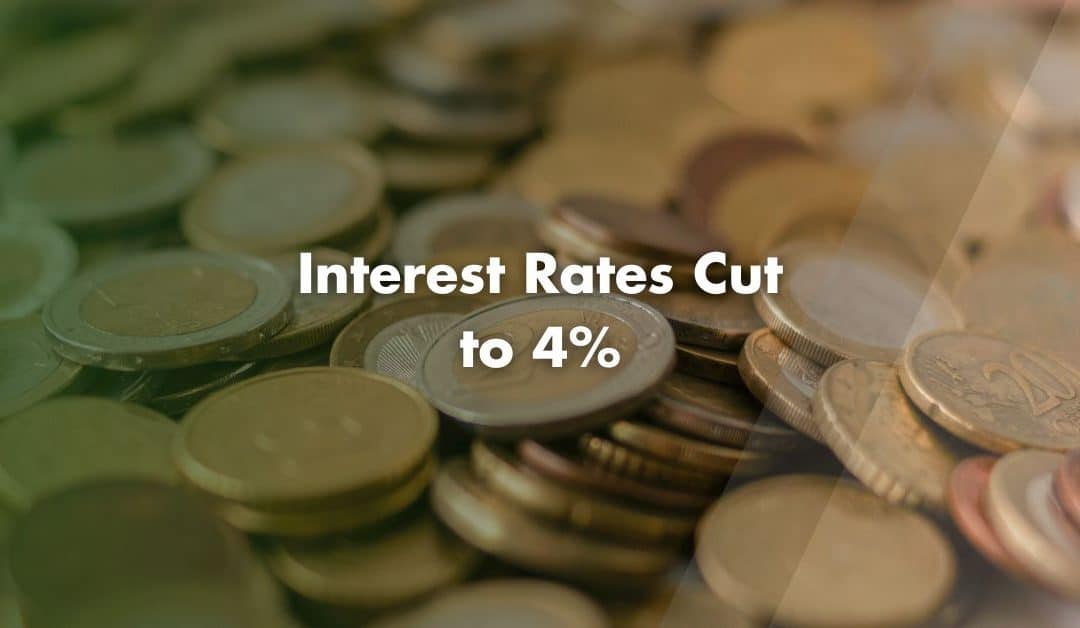The Bank of England has cut interest rates to 4%, marking the lowest level in over two years. Announced today, 7th August 2025, this is the fifth consecutive rate cut since August 2024. The Bank aims to inject momentum into a struggling economy while keeping inflation, which remains above the 2% target, under control.
Why Did They Cut Interest Rates to 4%?
The Bank of England cut the base rate from 4.25% to 4% as part of it’s “gradual and careful” approach to monetary easing. Although inflation has started to ease, the pace remains unexpectedly high. In June, inflation rose to 3.6%, up from 3.4% in May.
Meanwhile, the UK economy is showing signs of strain. Growth remains sluggish, the unemployment rate is creeping up and job vacancies are on the decline.
Rate cuts are supposed to make borrowing cheaper, encouraging consumers to spend and businesses to invest. The narrow vote among Monetary Policy Committee members (5 in favour, 4 against) highlights the uncertainty around the decision.
Good News for Mortgage Borrowers
Many mortgage holders will welcome this decision. Tracker mortgages follow the base rate, so repayments will fall immediately following the 0.25% reduction. Those on fixed-rate mortgage won’t see an instant change. However, the rate cut may still influence mortgage pricing in the coming weeks.
For the 900,000 households due to re-mortgage before the end of the year, the environment is shifting. Many homeowners who locked in rates between 1% and 2% during the post-pandemic boom now face the reality of rates closer to 4% or more.
Good News for First-Time Buyers Too
First-time buyers could benefit from the lower base rate as borrowing costs ease. Lenders are starting to offer more competitive deals, especially to those with strong deposits. Two-year fixed rates are now available from 3.73%, while five-year deals start around 3.86%.
For example: Someone with a 15% deposit might secure a 3.99% mortgage with a £999 fee. On a £200,000 loan over 25 years, that would result in monthly payments of around £1,054.
Less So for Savers
While borrowers may benefit, savers are likely to see their returns decline. When the base rate falls, banks often lower the interest they offer on savings accounts. Several providers have already trimmed their easy-access account rates, some dropping from over 5% to around 4.6%.
Easy-access accounts are the most vulnerable, with cuts of 0.1% to 0.15% already seen. Fixed-rate bonds are also at risk of falling further, particularly if more base rate cuts are expected.
Currently, the best one-year fixed-rate bonds pay about 4.5%, down from a peak of 6.2% in late 2023. If you’re saving for the medium to long term, now may be a good time to secure a fixed rate before further reductions occur.
Contact Us
We are not just accountants; we are Chartered Accountants with one of the most reputable and premium accounting bodies. We are registered and regulated by ACCA; so you can rest assured that you are in good hands. Knowing this, don’t hesitate to get in touch with us if you require assistance: Pi Accountancy | Contact Us
This article is for general informational purposes only and does not constitute legal or financial advice. While we aim to keep our content up to date and accurate, UK tax laws and regulations are subject to change. Please speak to an accountant or tax professional for advice tailored to your individual circumstances. Pi Accountancy accepts no responsibility for any issues arising from reliance on the information provided.

